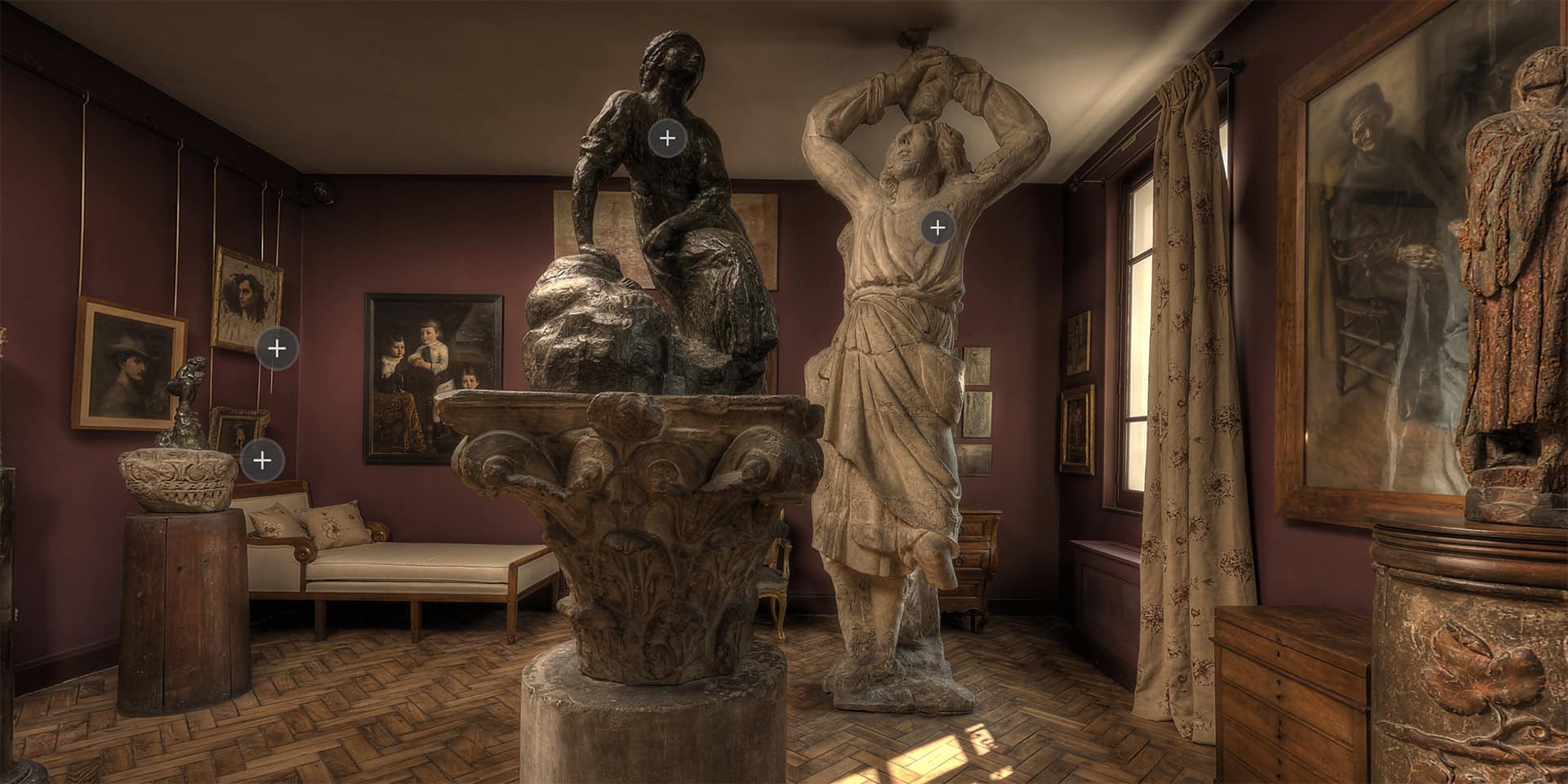Virtual tour for museums and cultural sites: 360° immersion accessible to all
A virtual tour for museums and cultural sites opens the doors of heritage to a global audience, removing physical or geographical constraints. Thanks to a tailor-made virtual tour, museums, galleries, monuments and historic sites are promoting their content in an innovative, immersive and interactive way.
These 360° devices enable enhanced mediation, expanded access to collections, and engaging presentations via the web, kiosks, or VR headsets. Discover how a well-designed digital experience can transform the relationship between visitors and cultural venues.

Click on the image to start the tour. Click on the guide icon for the guided tour.
Why integrate a virtual tour into your museum or cultural site?
With a interactive virtual tour, cultural institutions offer engaging experiences, adapted to all types of audiences. These solutions allow you to explore works in high definition, access enriched content (audio guides, interviews, behind the scenes) and personalize the tour according to specific themes.
By integrating tools like the gigapixel photography or stereoscopy, museums offer remarkable visual quality, which attracts attention while extending the interaction time of visitors online.
A cultural immersion accessible to all
Virtual tour for people with reduced mobility - PRM
Virtual tours are also a vector ofdigital accessibility. Developed in compliance with standards RGAA, they allow smooth navigation with keyboard, screen reader or voice commands. Some even integrate a gesture recognition, for contactless control using simple gestures.
This inclusive dimension is reinforced by PMR-adapted interfaces, multilingual options and compatibility with all types of devices — computers, tablets, VR headsets, or smartphones.
An educational, sensitive and personalized experience
Interactivity and Immersion
A 360° virtual tour becomes a powerful educational toolIt easily fits into school or university courses, allowing students to discover heritage works and sites in a different way. It also stimulates interest in history, the arts or architecture.
There virtual tour in stereoscopy, which adds a perception of 3D relief, reinforces the sensory immersion and emotion of the visitor. This type of content allows for better memorization of the experience.
Preserving and disseminating collections differently
THE HDR virtual tours play a key role in the digital preservation heritage. They make it possible to document places, even inaccessible or endangered ones, and to present rarely exhibited collections to the public.
Thanks to the gigapixel photography, institutions can show details invisible to the naked eye, and create real visual archives consultable over time.
Preservation and Documentation: the virtual tour in the service of archiving
Digital visibility and audience engagement
A well-designed virtual tour is a high-performance communication tool. Integrated into your site, promoted on social networks, it boosts your visibility, improves your natural referencing, and attracts a curious audience, including internationally.
It also promotes theonline community engagement, who can interact, comment, share their discoveries and thus extend the visit experience well beyond the physical location.
Towards the future of immersive mediation
With the rise of immersive technologies, the Interactive VR, multisensory interfaces, or artificial intelligence, immersive creations for cultural venues are evolving rapidly. Projects combining augmented reality, virtual guides Or adaptive courses will become the norm in the coming years.
Integrating these innovations now means anticipating tomorrow's uses while enhancing your institution today.
Marketing and Communication Benefits
Increased Visibility
Virtual tours are a powerful marketing tool for attracting new visitors. By integrating virtual tours on their websites and promoting them through social media, cultural institutions can capture the attention of a wider and more diverse audience. This increases visibility and can encourage more people to visit in person.
Online Community Engagement
Virtual tours foster online community engagement. Users can share their experiences on social media, participate in discussions and forums, and interact directly with cultural institutions. This engagement strengthens the bonds between institutions and their audiences.
Education and Awareness through Interactivity
Immersive Educational Tool
Virtual tours are valuable teaching tools for schools and universities. Teachers can integrate these tours into their lessons, providing students with immersive educational experiences. This enriches learning and sparks students' interest in history, art, and cultural heritage.
Heritage Awareness
By making cultural tours accessible to all, institutions can raise awareness among a wider audience about the importance of heritage preservation. Virtual tours can include educational elements about conservation and history, helping to promote understanding and respect for cultural heritage.
Future Perspectives of Interactive Achievements
With continued advances in virtual (VR) and augmented (AR) reality, virtual tours in the cultural sector will become even more immersive and interactive. Future technologies will enable historical reconstructions in augmented reality, real-time interactions with virtual guides, and personalized experiences powered by artificial intelligence. These innovations will further transform the way we discover and appreciate cultural heritage.
Conclusion: Virtual tours promote cultural mediation
Virtual tours represent a revolution in the cultural sector, offering considerable benefits in terms of accessibility, enriching the visitor experience, heritage preservation, and marketing. By adopting these technologies, cultural institutions can not only reach a wider and more diverse audience, but also offer unique and memorable experiences.
For further information: Studies on the benefits of virtual tours for museums
The impact of virtual tours on visitor engagement:
A study published on ResearchGate demonstrates that high-quality virtual museum tours—combining visual fidelity, intuitive navigation, and interactive content—result in significantly higher visitor engagement.
2025 Survey: Strong Public Demand for VR Tours
According to a survey carried out in early 2025 by the project Museums in the Metaverse, 79% of the public want to be able to access the collections in virtual reality, and more than 55% have already experienced it. This result shows a growing interest for the immersive cultural experiences.
